Princeton Ecologists Propose Theories for the Fairy Circles of Namibia : A Well Thought Out Scream by James Riordan
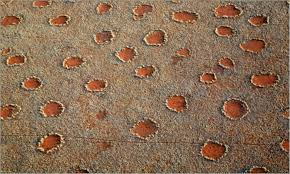
Parts of the Namib desert seem to have a very unusual pattern. Locals have long called the mysterious circle the “footprints of the gods”. Others say it resembles polka dots or a bad case of chickenpox. The more romantic say these discolored circles were caused by the breath of s subterranean dragon. While I must admit that the poet in me likes the dragon theory, I’m going to have to go with the scientists on this one.
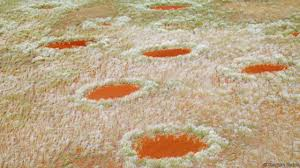 The popular name for these bare, red circles fringed with grass are fairy circles and ever since they became the focus of scientific study, researchers have proposed a host of ways by which the bare discs of soil may form. One idea points the finger at underground termites that engineer the landscape above their heads. Another proposal claims the patterns, which can grow to 25 meters wide, are created by the natural competition between desert grasses.
The popular name for these bare, red circles fringed with grass are fairy circles and ever since they became the focus of scientific study, researchers have proposed a host of ways by which the bare discs of soil may form. One idea points the finger at underground termites that engineer the landscape above their heads. Another proposal claims the patterns, which can grow to 25 meters wide, are created by the natural competition between desert grasses.
Ecologists at Princeton University have come up with the latest theory which they arrived at by using computer models. They began by running simulations that would mimic the impact on desert grasses of termites building colonies underground. Sand termites in the Namib desert eat the roots of low-lying vegetation, meaning more moisture for them, and dead patches on the ground above. In the simulations, the dead zones were confined to patches created when neighboring colonies of a similar size came up against one another, and settled on a border between their territories.
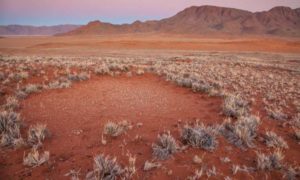 “The termites start with their own mound and go out and forage,” said Corina Tarnita at Princeton. “If they find a smaller colony, they simply kill it and expand their own territory. But if they run into a colony that is about the same size, they cannot do that, and end up with a boundary where there’s permanent conflict, but not a full-blown war.”
“The termites start with their own mound and go out and forage,” said Corina Tarnita at Princeton. “If they find a smaller colony, they simply kill it and expand their own territory. But if they run into a colony that is about the same size, they cannot do that, and end up with a boundary where there’s permanent conflict, but not a full-blown war.”
But the termites did not explain the patterns completely. Tarnita next built a computer model that simulated the warring underground termites as well as the natural competition that arises between desert greenery. If a plant takes root in the desert, it can provide moisture and shade for others nearby, and so give them a helping hand. But as the plant grows, its roots spread out to draw in more water, making it harder for more distant plants to find water themselves.
© Provided by Guardian News The “fairy circles” of the Namib desert, which can grown to 25 metres wide
When Tarnita ran the new simulation, fairy circle-like patches appeared as the digital termites went about their business. But the conflict between plants in the simulated desert gave rise to their own fresh patterns – small clumps of vegetation in the spaces between the fairy circles.
“You find a much smaller scale pattern that’s driven by the plants self-organising in response to water,” Tarnita said. To check whether the patterns might occur in the wild, the scientists went to Namibia and took photographs of the landscape. “We found an exact agreement, as you zoom in you see these very striking patterns,” Tarnita said.
The researchers, who reported their findings in Nature, do not claim to have an explanation for how every fairy circle forms. But when they combine the two theories, the patterns that arise more closely match those seen in the desert, Tarnita said. “We get a much more complete description of the patterns,” she said.
“One of the most striking things about nature is that despite the complexity of all of its interactions and the many processes that act simultaneously, sometimes, and more often than we expected, you find these amazing regularities,” she added. “We wanted to know how can these messy things results in so much beauty and order on such enormous scales?”
Until recently, fairy circles were only known in the Namib desert. But in 2014, scientists reported that they had spotted similar patterns in Western Australia’s Pilbara region. Aerial photographs revealed them to be nearly identical to those found in Namibia, despite being so far away.


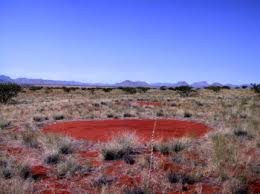
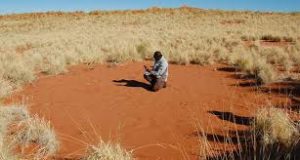

No Comment